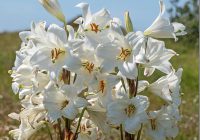Dr Phil Smith’s Wildlife Notes
July 2019
Since these notes began over 12 years ago, extreme weather and its effects on wildlife has been a constant refrain Now the Met. Office tells us that we had the warmest July since 1884, the UK’s record highest temperature being broken on 25th, while subsequent heavy rain led to flash flooding in the Pennines. Here, July began with drought conditions, virtually no rain falling until 19th. Thereafter, it rained on eight days, though we missed the torrential downpours elsewhere. A pulse of warm air from the continent produced a short-lived heatwave late in the month.
The warmth helped many duneland insects. The Ringlet colony at Ravenmeols spread to the nearby Range Lane pasture, while the Hightown scrapes still had up to four Red-veined Darters on 3rd and 7th, presumably survivors from the June influx. They were accompanied by the usual Black-tailed Skimmers, Broad-bodied Chasers, Emperorsand Common Darters. A totally unexpected find nearby was a patch of spectacular white Madonna Liliesin full flower. There was no sign of them being planted, though that origin seems likely. A visit to Ainsdale National Nature Reserve with Trevor Davenport was rewarded with good views of a Purple Hairstreak (found by others). Trevor also spotted a rare Forester moth on Ragwort.
The heatwave on 25th brought another influx of Red-veined Darters to the Hightown scrapes, four males suddenly arriving out of the blue. They behaved differently from earlier individuals, being wary and perching on emergent plants rather than on the ground. The following day, I found eight species of dragonflies, including four Ruddy Darters, at slack 47in the Birkdale frontals. More Ruddy Darters were reported in Ainsdale NNR, while Trevor and I bumped into a male at a friend’s garden pond at Hillside. This is encouraging news for a species that was thought to be on its way out in the region. My regular dragonfly walk at Mere Sands Wood Nature Reserve did not find any Ruddy Darters but eight other dragonflies and damselflies were seen, being much appreciated by the 22 participants.
Another consequence of the southerly airstream was a spectacular invasion of Painted Lady butterflies, especially on 30th, when Pete Kinsella reported about 650 on Sea Holly at Crosby Coastal Park. I went the following day but in windy conditions counted only 40. Some were fresh, having recently emerged, while worn and faded specimens may have come from further afield. Also on the Sea Holly and Sea Spurge were many hoverflies, including the distinctive black-and-white Scaeva pyrastri, which is a known migrant. A single specimen of the attractive Greater Knapweed was a plant I see rarely on the coast. Even rarer was a flowering individual of Sand Leek that Patricia Lockwood found on Wicks Path at Formby Point. It had not been recorded on the coast since the 1980s. Another plant unaffected by the drought was the non-native Hungarian Mullein at Ravenmeols woods, its only northern England locality. Eight candelabra flower-spikes up to 2.5m tall made a big impression.
One of my regular visits to Freshfield Dune Heath Nature Reserve produced two major highlights. First, I was delighted to find two male Southern Hawkers hung up on a Gorse bush. Passing dog-walkers disturbed them and I thought my chance had gone but they returned and allowed me to photograph them at leisure. Using a sweep-net to search for the rare Heather Shieldbug, I had three juveniles in the net within minutes and, a little later, caught an adult. Apart from one I found here last year, these were the first Heather Shieldbugs seen in the vice-county since 1997. A well-camouflaged Grayling on a path was also unexpected, as this butterfly is usually associated with younger dunes near the sea. Returning the following day, I photographed a supposedly common parasitic fly, Dexiosoma caninum, which was new to me.
I joined Ainsdale NNR staff on 10th to search scrapes in the centre of the reserve for Various-leaved Pondweed, the food-plant of a nationally rare weevil, Bagous lutosus, found by Gary Hedges of Liverpool Museum. I confirmed the pondweed in two of the scrapes and also found a population of the Red-listed Lesser Water-plantain. However, the scrapes are now horribly overgrown by Grey Willow and birch scrub that has developed since they were dug in 1976. My photographs show that 35 years ago the banks were scrub-free. These scrapes had the first Ruddy Darter for the region in 1989 but are now unsuitable for this and other dragonflies. Management is needed to prevent the deterioration over time of habitats like this.
Finally, a rare trip away from the Sefton Coast on 23rd saw Trevor and me heading for Birk Bank Bog near Quernmore on the edge of Bowland. This is the only Lancashire breeding site for the Keeled Skimmer, which we found within seconds of our arrival. Also there were two stunning Golden-ringed Dragonflies, a species that it hard to see in the Northwest. Being impressed by the quality of the bog, we thought it should be a nature reserve.





